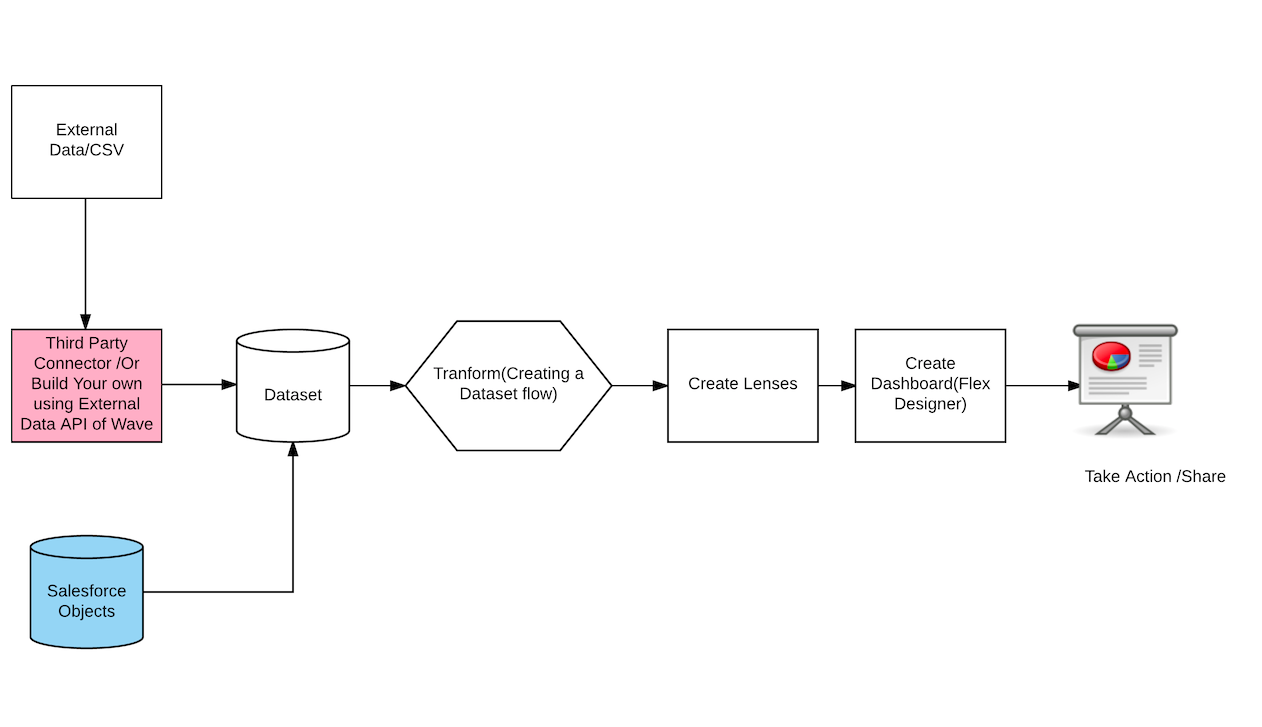
With huge volumes of data getting aggregated in verticals like healthcare (data from wearables like Fitbit or Apple Watch is a classic example), financial services (data from daily login and transactions), insurance and so on, it’s becoming increasingly important to analyze and visualize the data to gain meaningful insights. Analytics help organizations harness data and use it to identify new opportunities.This leads to what we all want: smarter business moves, more efficient operations, higher profits, and happier customers.
Wave Differentiators
The Salesforce Wave platform is one of the fastest emerging analytics platforms, offering greater capabilities than simple business intelligence (BI) tools. Salesforce has added packaging capability to Wave, which means if you are an ISV (Independent Software vendor), you can leverage the power of the platform to build reusable reports and dashboard templates for your customers – and create another revenue stream for your product.
Other differentiators for Salesforce Wave include:
- It’s a cloud-based platform, hence no hardware maintenance cost.
- Wave is designed to be mobile first but can also be integrated seamlessly in to Salesforce layouts and apps.
- It’s a common misconception that Salesforce Wave is designed to analyze just Salesforce sales, service, and marketing data. Wave can take larger datasets from a third party platform or combine data from Salesforce and third party services.
- Wave is an API first platform (REST and JSON based) and you will find excellent API support for programmers and developers to help with deep integrations to other products.
The aim of this blogpost is to introduce you to what it takes to build a Wave Analytics application that can be installed and distributed among your customers.
Building Wave Applications
Below is a simplified diagram that explains the process of building a collection of lenses and dashboards using Wave/Analytics Cloud from scratch.

The key items to consider for building Wave apps include:
- Data Source – Wave can take in huge datasets (+100 million rows) from both Salesforce itself and external API’s for merging and analytical processing. Third parties like Mulesoft, Informatica, Talend, and many more can serve regularly integrated loads of contemporary business data which are then automatically merged in the Analytics Cloud based on the data modeling and transformation automation instructions. Business critical answers that used to take 6-8 weeks of data warehouse configuration and creation can now take mere days or shorter.
- Data Modeling – Building datasets involves some data modeling. A metadata JSON file is used to classify fields as dimensions and measures when the data is created/refreshed. Dimensions can be thought of as those items that you want to track, for example: Opportunities, Leads, Converted Accounts with activities. Measures on the other hand are the values those items may have: number of closed/won opportunities over $20,000, number Converted Accounts combined with activities. This becomes the template that the data is transformed through as new data is refreshed.
- Data Transformation – The dataflow set up wizard allows admins or super-users to configure the JSON file to perform slicing and dicing of the dimensions and measures.
- Creating Lenses and Dashboards – Once the data source is in Wave, the flex designer allows admins to easily build visualizations out of datasets. Not only that, freedom can be given to end users, allowing for custom statistical facets, selected in real time, potentially preventing the need for waiting a product development cycle before a critical answer is obtained.
An Excellent Source of Untapped ACV
Like most everything in Salesforce, all of the configuration can also be done via the Metadata API provided by the platform. Not only does this allow for the use of continuous integration and source control tools but the ability to package, deploy, and sell standalone applications. Just like integrated applications built for and sold on the AppExchange, Wave Applications allow you to craft a commonly encountered Analytics use case for your customers and sell that solution side by side with your AppExchange play. Given that Analytics Cloud is a separate licensing model from Salesforce.com licenses, Wave applications can be an excellent source of untapped ACV.
How to Fast Track Your Wave App
At CodeScience, our core strength has been building ISV apps and bringing products to market faster. Since building Wave managed package apps are very similar in process to the Salesforce ISV apps, we can help you to build scalable applications on the Analytics Cloud app platform. If you need help bringing your Wave Analytics app on the AppExchange, let’s talk.

